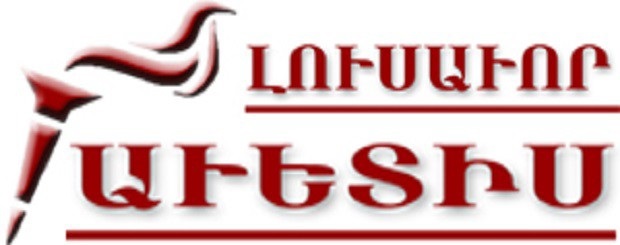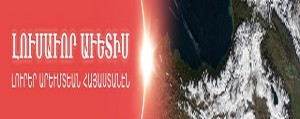
WORLD – Russia Sends More Troops West, Signaling New Challenge to U.S.-NATO Presence Near Borders
WORLD – INTERNATIONAL AFFAIRS – RUSSIA
BY TOM O’CONNOR ON 6/5/20 AT 3:46 PM EDT
Russia has announced the deployment of more advanced personnel to its western region, signaling a new challenge to the increasingly active U.S.-led NATO military alliance forces operating there.
The Western Military District press service said Friday that the Separate Guards Motorized Rifle Sevastopol Red Banner Brigade was included in Moscow’s Novomoskovsky Administrative District, joining the Guards Red Banner Tank Army “to perform tasks on ensuring the defense of the Russian Federation in the Western strategic direction,” according to the state-run Tass Russian News Agency.
The motorized rifle units are equipped with “more modern weapons and specialized vehicles,” including the T-90A tanks, BTR-82A armored carriers, BMP-3 combat vehicles, and 9A34 Strela-10 and 2S6M Tunguska air defense systems, the Russian military said.
The moves came just days after Colonel General Sergei Rudskoi of the Russian General Staff slammed “anti-Russian” activities conducted by the U.S. and allied states of the 29-member NATO defense pact near his country’s borders. The largest deployment of U.S. troops in a quarter-century was scaled down due to novel coronavirus concerns in March, but the U.S. still stepped up its presence through other maneuvers.

These exercises include U.S. aerial activity over the far eastern Kamchatka Peninsula, Sweden and Norway in northern Europe, and in Ukraine, where West-backed forces are fighting an eastern insurgency they say Russia supports. In the Arctic, three U.S. Navy Sixth Fleet destroyers entered the Barents Sea for the first time in three decades, holding missile defense drills alongside warships of the United Kingdom.
“In these challenging times, it is more important than ever that we maintain our steady drumbeat of operations across the European theater while taking prudent measures to protect the health of our force,” U.S. Sixth Fleet commander Navy Vice Admiral Lisa Franchetti said in a press statement at the time. “We remain committed to promoting regional security and stability, while building trust and reinforcing a foundation of Arctic readiness.”
Sixth Fleet spokesperson U.S. Navy Commander Kyle Raines told Newsweek that the “operations were not in response to any specific event,” but did serve to enhance the U.S. and NATO presence in the strategic Arctic region where both the alliance and Russia were increasingly active.
“U.S. 6th Fleet is expected to play a large role in our U.S. Arctic strategy and our operations above the Arctic Circle provided us with the opportunity to train and operate in extreme and challenging conditions,” Raines said. “Working with our allies and partners, the Royal Navy in this case, we not only strengthened bilateral relations and capabilities, but we enhanced the NATO Alliance.”
He also noted that Russia was told of the training in advance “in an effort to avoid misperceptions, reduce risk, and prevent inadvertent escalation.”
But Rudskoi told Monday’s press briefing that Russian military officials saw the U.S. military moves as “provocative,” arguing that Moscow was not notified of the drills until the last minute.
He also said that Russia had proposed a mutual de-escalation of military activities in a letter to NATO Secretary-General Jens Stoltenberg but received no response. This year, he said, Russia would not conduct any major military exercises near its borders with NATO member states, even as he observed a “significant increase in NATO military activity near the Russian borders.”
One NATO official told Newsweek that the alliance canceled several exercises due to novel coronavirus concerns and remains active in attempting to engage with Moscow diplomatically.
“NATO remains open to dialogue with Russia on military risk reduction and transparency, which is why in February we proposed to the Russian side to hold another meeting of the NATO-Russia Council,” the official said. “Unfortunately Russia has so far not shown any interest in a meeting.”
“NATO Allies also continue to call on Russia to follow existing transparency rules and to engage constructively in modernizing the Vienna Document on military activities,” the official added.
The alliance has proceeded with certain maneuvers, however, and Rudksoi tied these to the U.S. withdrawal from the Open Skies Treaty allowing for the passage of spy planes over one another’s territories and from the Intermediate-range Nuclear Forces Treaty banning land-based missiles ranging from 310 to 3,420 miles. Washington has defended its decisions by arguing Moscow was abusing these agreements, but Russian officials have rejected these accusations.
With the White House now threatening to let the New Strategic Arms Reduction Treaty (START) expire, the nuclear arsenals of both countries may be unrestricted by February for the first time since the Cold War. After unsuccessful appeals to get the U.S. to sign a treaty that would preclude the use of nuclear weapons in a conflict and accusing Washington of lowering its own nuclear threshold, Russia updated its own nuclear doctrine Wednesday to include two new potentially nuclear scenarios that may be triggered in response to conventional attacks.
That doctrine also specifically criticized the practice of nuclear states deploying weapons of mass destruction to non-nuclear states in reference to NATO’s practice of nuclear sharing. Russian President Vladimir Putin has warned both the U.S. and NATO allies hosting Pentagon weapons would be legitimate targets in the event of an attack.
Updated June 6, 2020, 4:41 PM ET, to include a statement from a NATO official and the U.S. Navy Sixth Fleet.
newsweek.com/russia-sends-more-troops-west-signaling-new-challenge-us-nato-presence-near-borders-1509023?amp
